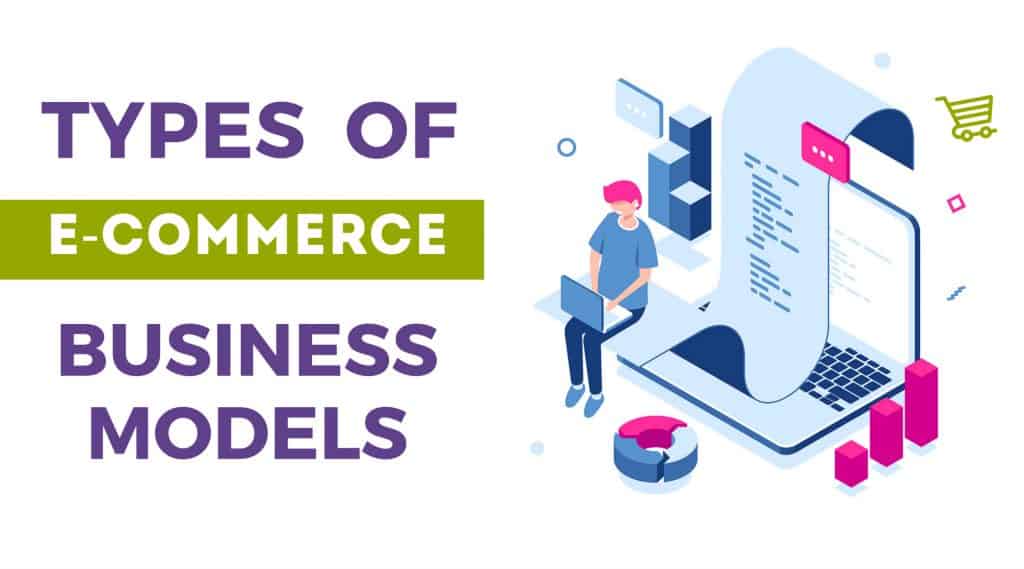Top 3 Business Models For E-Commerce
E-Commerce has become a major player in the retail industry in recent years providing businesses with a convenient way to reach customers and make profits and generate revenue through their websites. As technology evolves we can see e-commerce becoming an accessible option for all sizes of businesses. When deciding which business model to use, it is crucial to consider your company’s products or services, goals, and resources.
Top 3 business models for E-Commerce
The unprecedented truth is e-commerce is the future and 2023 will mark a strong base for that, the following three business models will dominate the market.
Subscription-based Model:
The subscription-based model involves customers paying a recurring fee to access the company’s products or services. This business version provides a predictable and recurring revenue stream, and it allows for the personalization of the customer experience but requires the development of a compelling value proposition and a secure e-commerce website to be developed. Subscription-based businesses typically charge customers on a month-to-month or yearly basis, and they provide quite a number of services or products which might be delivered to the customer’s doorstep.
Upsides:
The main advantage of the Subscription-based model is a guaranteed stable and recurring revenue stream for the company. This recurring revenue stream ensures that the company has a predictable and stable source of income, which helps in effective planning and budgeting for company development and expansion.
The model allows for personalization of the customer experience based on their preferences and needs. With access to customer data, the company can use it to tailor the customer experience and make personalised product recommendations. For example, an e-commerce beauty company with a subscription-based model can use customer data to suggest products best suited for their skin and hair type, among other personal preferences.
Increased customer retention is another advantage of the Subscription-based model. Customers are more likely to remain loyal to the company they have made a commitment to through their subscription, leading to higher customer retention rates compared to traditional e-commerce businesses. This increased loyalty can result in continued purchases of products or services from the company in the future.
Downsides:
- Pricing strategy is necessary to attract and retain customers: Subscription-based businesses need to price their products or services carefully to attract and retain customers. If the price is too high, customers may cancel their subscriptions, and if the price is too low, the business may not make a profit.
- Need for continuous effort to provide value: In order to sustain and grow the subscription-based company, it is important to make continuous efforts to provide value to customers. This may involve launching new products, enhancing the customer experience, and offering incentives to prevent cancellations.
Marketplace Model:

The marketplace model is a type of e-commerce business that acts as a platform that connects buyers and sellers. The marketplace owner creates a platform where buyers and sellers can trade goods and services, and they earn a commission on each transaction that takes place. The platform owner typically does not own the products or services that are being sold, and they do not take physical possession of the products. Instead, they facilitate the transactions between buyers and third-party sellers. This model requires a competitive website and the management of third-party sellers.
Upsides:
- Minimal Start-Up Expenses: Setting up a marketplace platform is a cost-effective solution as it eliminates the need for purchasing and storing inventory.
- Diverse Product Range: The platform offers a broad range of products and services, making it appealing to a wide customer base and providing sellers with a vast audience to market their offerings to.
- User-Friendly Platform: The marketplace website is designed to be easily navigable for both buyers and sellers. Buyers can quickly find the products or services they seek, while sellers can effortlessly list and manage their offerings.
Downsides:
- Intense Competition: With numerous marketplaces available on the internet, it can be a challenge to differentiate a website and attract customers in the midst of intense competition. Website owners must continuously explore innovative strategies for development to make their platform stand out among the competition.
- Reliance on Third-Party Sellers: The marketplace’s success is heavily dependent on the quality and reliability of third-party sellers. This dependence may result in issues regarding product quality, delivery times, and overall customer satisfaction, affecting the overall development of the website.
- Commission Fees: Website owners earn a commission on each transaction, which can result in reduced profit margins for sellers and discourage them from using the platform. This can have a negative impact on the development and growth of the website.
Dropshipping Model:
The Dropshipping Business Model entails retailers forwarding customer orders to suppliers rather than holding their own inventory. This model is characterised by its low start-up costs, as businesses don’t have to invest in inventory upfront. Additionally, it allows for a vast product range without the need for extensive storage space. Notable examples of successful dropshipping companies include Oberlo, AliExpress, and Spocket. This model is ideal for businesses with limited funds or storage capabilities. However, the development of strong supplier relationships and control over product quality and delivery times are crucial for success in the dropshipping e-commerce model.
Upsides:
- Low Start-Up Costs: As dropshipping businesses don’t have to invest in inventory upfront, the start-up costs for website development are relatively low.
- Wide Range of Products: Dropshipping businesses can offer a vast selection of products without having to worry about storage space. This allows for increased customer choice and flexibility.
- No Inventory Management: The supplier is responsible for managing inventory, so the retailer does not have to worry about stocking or managing product stock levels on their website.
- Flexibility: Dropshipping businesses can easily add or remove products from their online store without having to physically manage the inventory, providing flexibility in website development.
- Scalability: The dropshipping model is scalable, so businesses can easily expand their product range as they grow.
Downsides:
- Product quality and delivery times are not under the control
- Increased Competition
- Need to Find Reliable Suppliers
It is important for business owners to take these challenges into account before deciding to adopt the Dropshipping Model.
Conclusion:
In 2023, e-commerce businesses have multiple opportunities to reach their target audience and generate revenue. The subscription-based, marketplace and dropshipping models are predicted to be the most in-demand. Selecting the best model for your business depends on the nature of your offerings, as well as your business objectives and available resources. Careful consideration of the benefits and drawbacks of each model is crucial before making a choice. By developing a strong website, building a great company, and continuously working on the development of their model, companies can maximise their potential and reach their business goals.
Read More: 5 Ways To Get More Money Out of Your eCommerce Business


